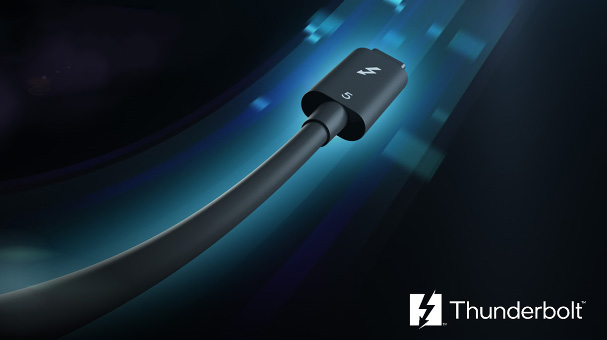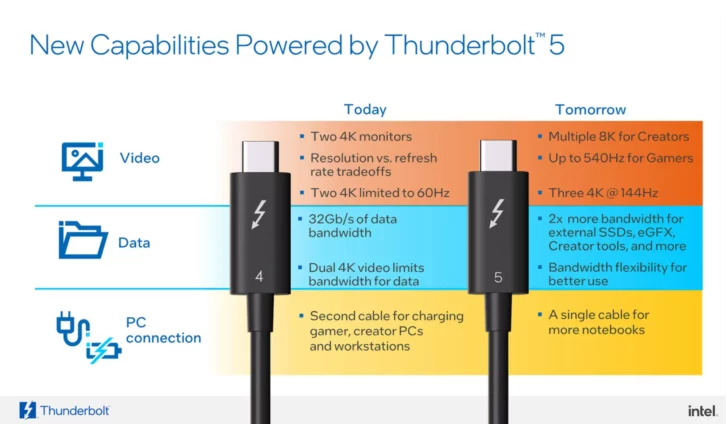
Intel has announced Thunderbolt 5, the latest upgrade to their interface standard. Thunderbolt 5 features bandwidth speeds several times faster than its predecessor, all while still using USB-C ports and offering backwards compatibility with older USB standards or versions of Thunderbolt.
“Thunderbolt 5 will provide industry-leading performance and capability for connecting computers to monitors, docks, storage and more,” Jason Ziller, GM of the Client Connectivity Division at Intel said. “Intel is excited to continue our tradition of leadership for wired connectivity solutions. Thunderbolt is now the mainstream port for connectivity on mobile PCs, and delivering the next generation of performance with Thunderbolt 5 will provide even more capability for the most demanding users.”

Thunderbolt 5 supports up to 120 Gbps of video bandwidth. This feature is available for next-gen monitors that can use that kind of speed, and accomplishes this by converting one of its two receiver lanes into a transmitter lane. Otherwise, Thunderbolt 5 utilizes two receiver lanes and two transmitter lanes, each running at 40 Gbps.
See also: Western Digital hit with multiple lawsuits alleging their SSDs randomly wipe users’ data
Intel claims that Thunderbolt 5 will enable the connection of multiple 8K monitors, or three 4K monitors at 144Hz.
“Microsoft is excited to closely collaborate with Intel to bring the latest USB4 standard to Windows customers,” said Ian LeGrow, corporate vice president of Core OS product management at Microsoft Corp. “Thunderbolt 5 is fully USB 80Gbps standard compliant to support the next generation of high-performance displays, storage and connectivity.”
Intel says that the first computers and accessories to ship with Thunderbolt 5 are expected to be available starting next year.










